Art World
The Internet Can’t Get Enough of These Images of Masterpieces Devoid of People. Most Surprised by This Development? The Artist Behind Them
José Manuel Ballester can take a crowded art-historical masterpiece and reduce it to an empty room.
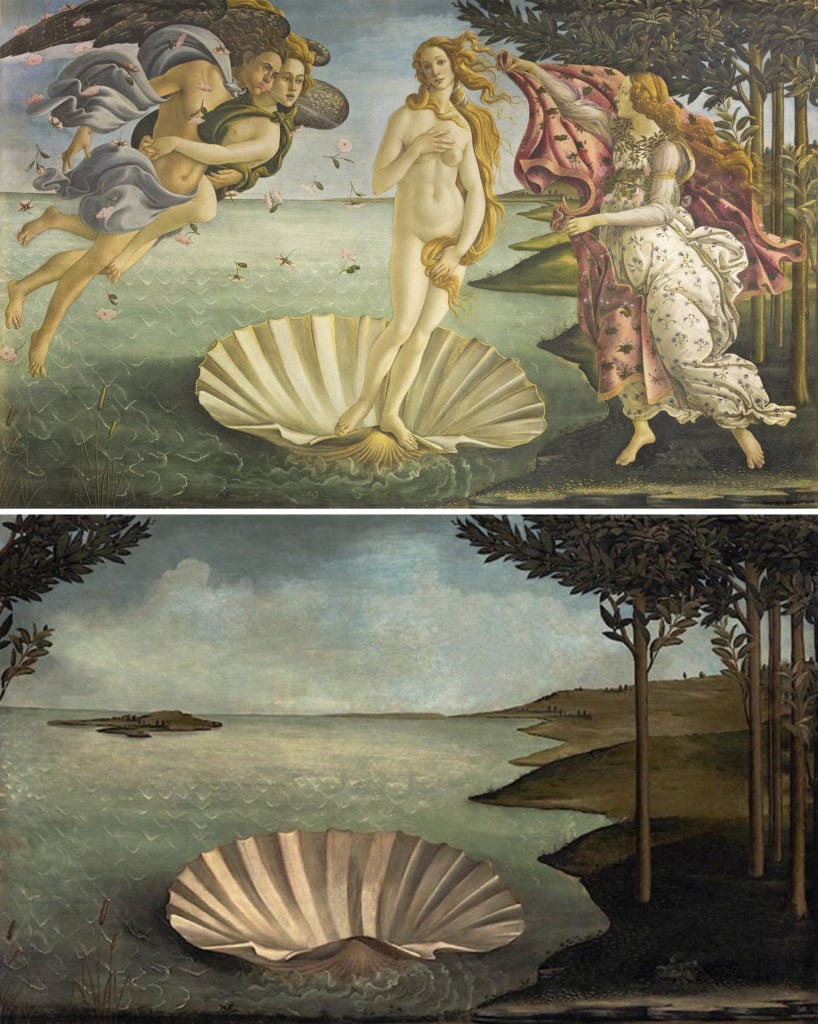
José Manuel Ballester can take a crowded art-historical masterpiece and reduce it to an empty room.

Sarah Cascone

What if art history’s greatest masterpieces were, well, empty?
In José Manuel Ballester’s series “Concealed Spaces,” he has created replicas of some of the world’s most famous artworks, exactly as you remember them—except all the people are gone.
Today, many of the world’s most famous gathering places are eerily empty as governments around the world ask their citizens to stay home. Ballester’s work seems tailor-made for the time.
The artist, who began the series in 2006, uses Photoshop to seamlessly edit well-known masterpieces such as The Last Supper (1498) by Leonardo da Vinci, The Raft of the Medusa by Théodore Géricault (1819), The Birth of Venus (circa 1486) by Sandro Botticelli, and Las Meninas (1656) by Diego Velázquez to make the pictures look pristinely empty.
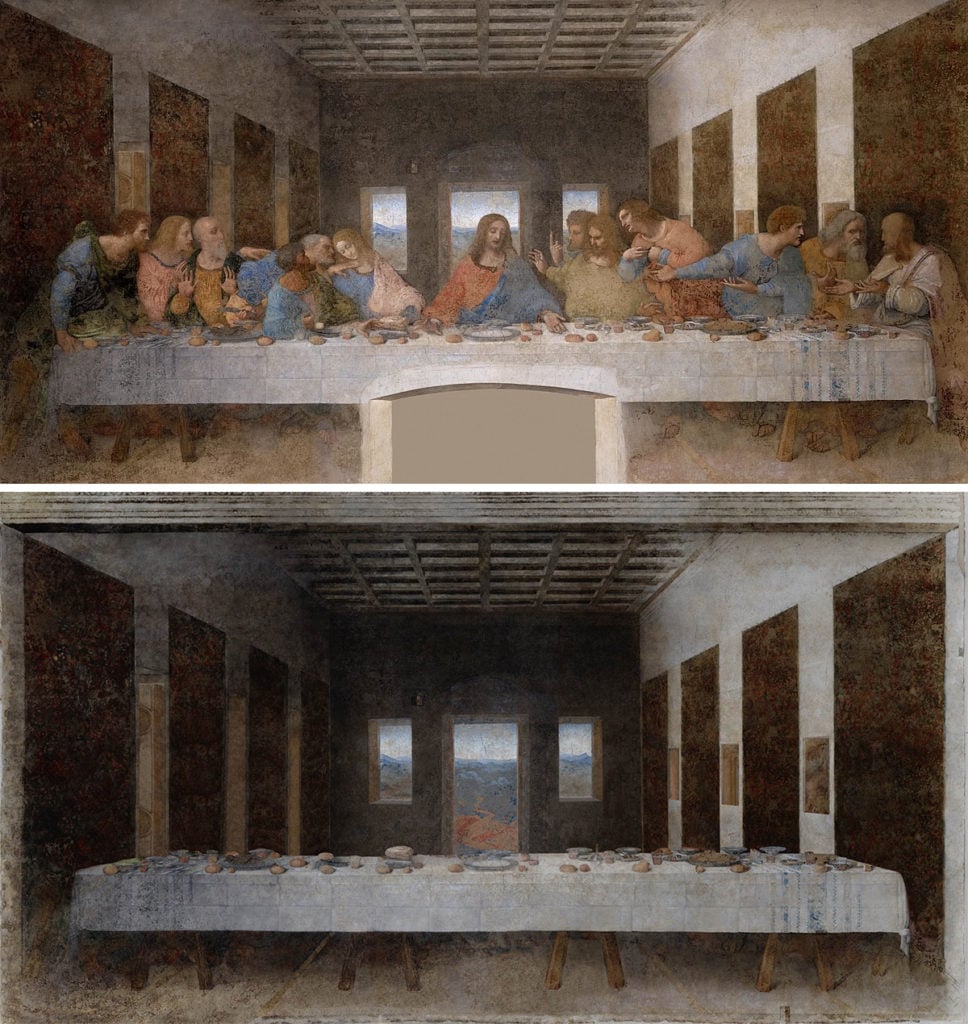
Jose Manuel Ballester’s empty version of The Last Supper by Leonardo da Vinci. Courtesy of Jose Manuel Ballester.
In choosing which paintings to feature in the series, Ballester gravitated toward “the most universal themes used throughout the history of art: war, religion, mythology, death,” he told Artnet News in an email.
The resulting images, in which a sense of silence and stillness prevails, are both familiar and utterly unsettling, and there is something decidedly “off” in seeing recognizable paintings stripped of some of their most important elements. By making the compositions almost entirely bare, Ballester highlights the beauty of sometimes overlooked backdrops, but there’s something undeniably sad about seeing Boticelli’s scallop shell empty, with Venus nowhere to be found.
That work in particular was an offshoot of one of Ballester’s original compositions. “I transferred the empty spaces that I portrayed in my urban landscapes to the world of classical painting,” he said.
Ballester, who isn’t on social media, said he was wasn’t comfortable speaking about why the works went viral online, but he did admit he’s been inundated with email request to reproduce the artworks in recent days.
“In these circumstances,” he said, “it fits very well with the idea of staying at home.”
See more works from the series below.
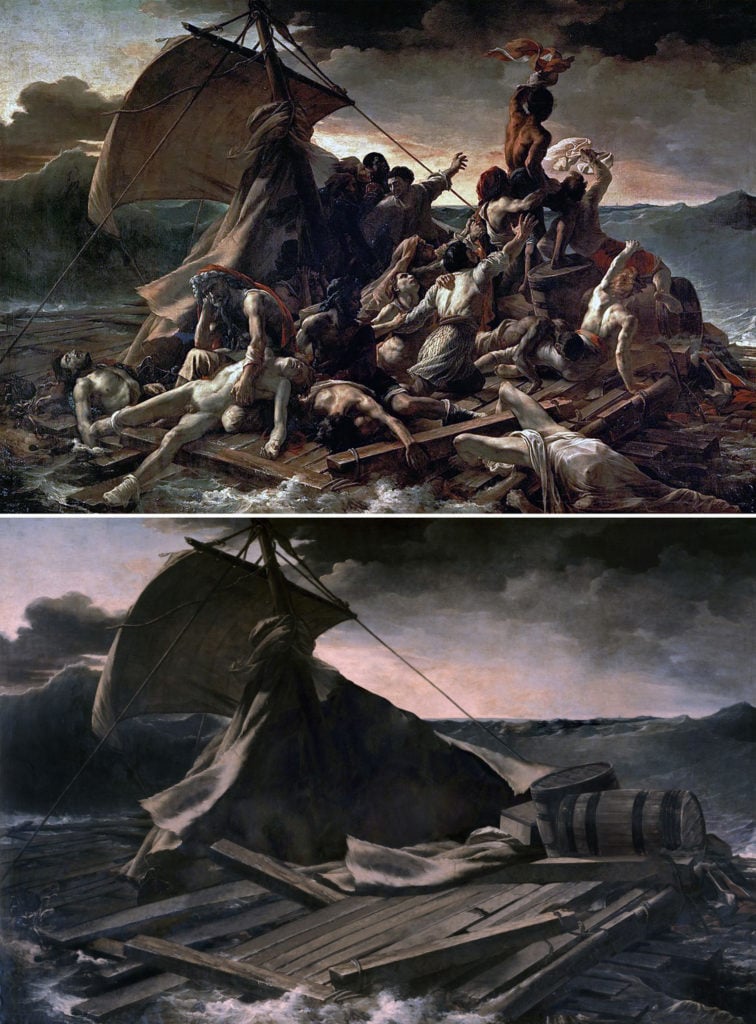
Jose Manuel Ballester’s empty version of The Raft of the Medusa by Théodore Géricault. Courtesy of Jose Manuel Ballester.
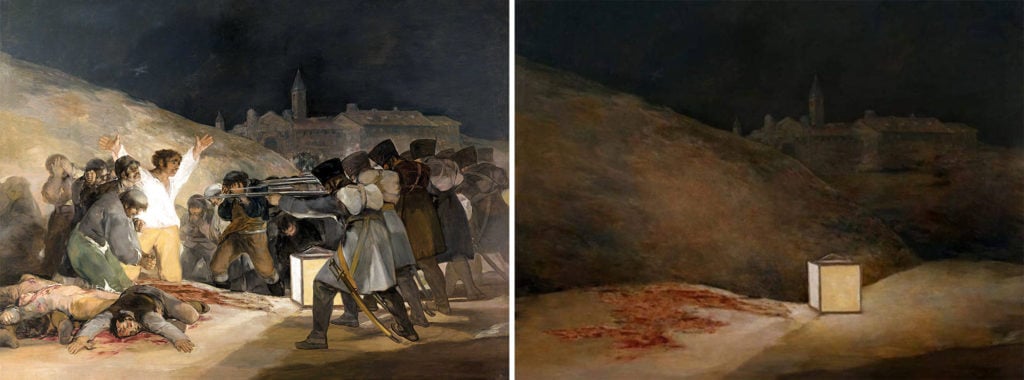
Jose Manuel Ballester’s empty version of The Third of May 1808 by Francisco Goya. Courtesy of Jose Manuel Ballester.
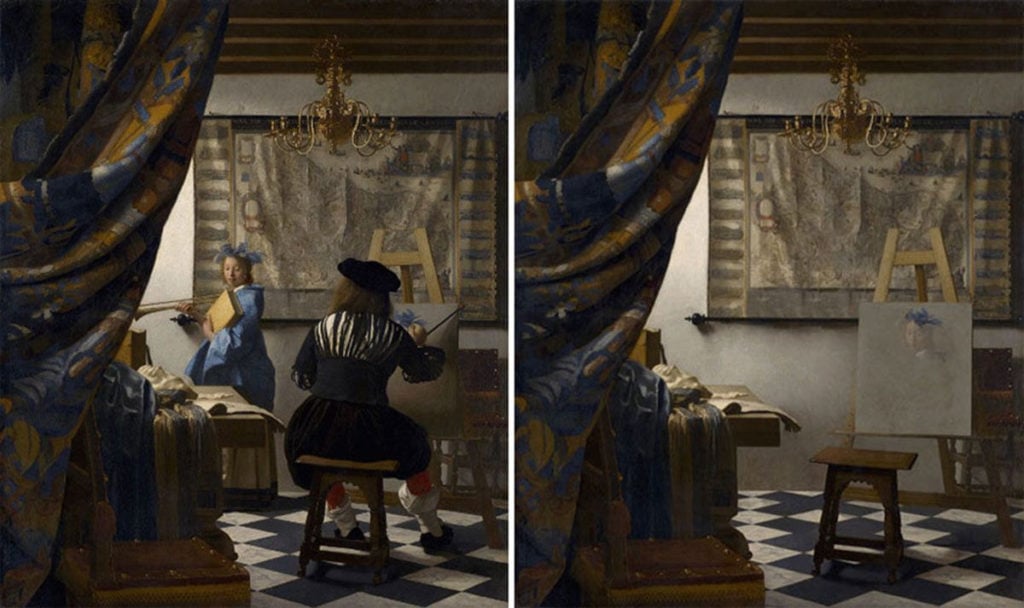
Jose Manuel Ballester’s empty version of The Allegory of Painting by Jan Vermeer. Courtesy of Jose Manuel Ballester.
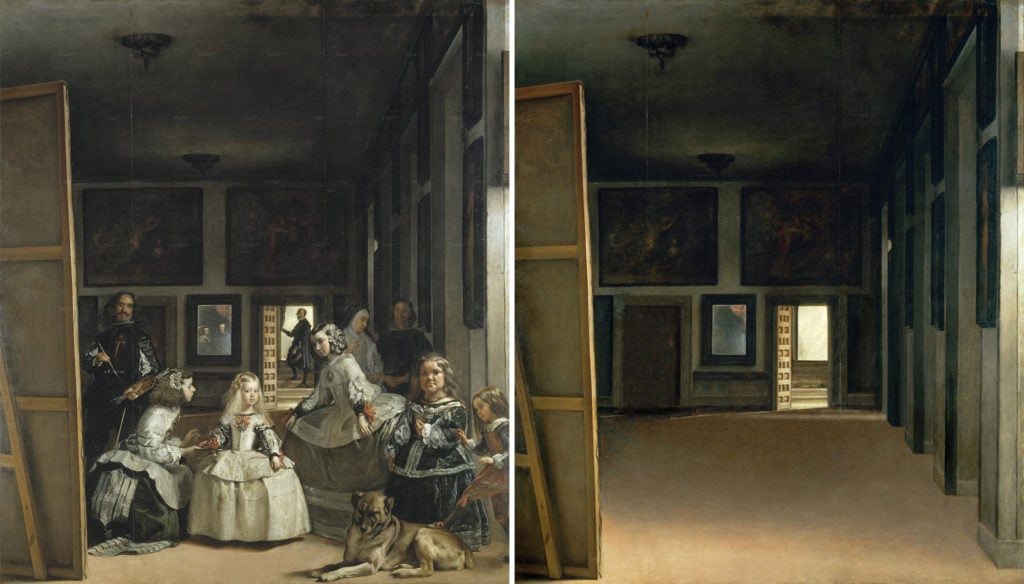
Jose Manuel Ballester’s empty version of Las Meninas by Diego Velázquez. Courtesy of Jose Manuel Ballester.